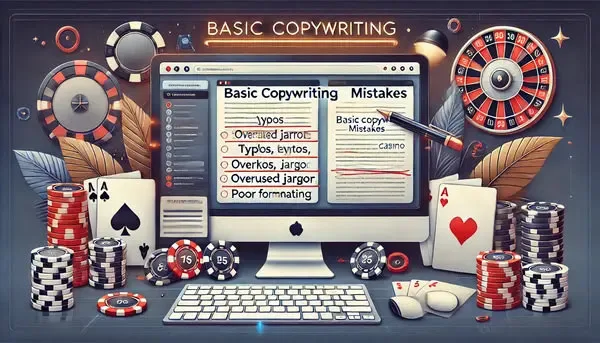
Unraveling the Impact of LSI Copywriting on SEO
In the ever-evolving landscape of digital marketing, LSI (Latent Semantic Indexing) copywriting has emerged as a pivotal strategy, reshaping traditional SEO approaches and heralding a new era of content optimization. This article delves into the essence of LSI copywriting, distinguishing it from classic SEO practices, and examining its advantages and limitations, particularly through the lens of applications like those seen on platforms such as GoldenPark online casino.
What is LSI Copywriting?
LSI copywriting integrates the concept of Latent Semantic Indexing, a system used by search engines to understand the relationships between various words and concepts in content. It involves crafting content that not only focuses on target keywords but also incorporates a variety of related terms and phrases. This approach helps search engines grasp the context and relevance of the content, enhancing its ability to match user queries more accurately.
The Distinction Between LSI Texts and SEO-Optimized Ones
The main difference between LSI texts and traditional SEO-optimized content lies in their approach to keyword use. While SEO-optimized content often focuses on density and placement of specific keywords, LSI texts broaden this by including semantically related terms. For instance, in the context of casino Golden Park, an SEO-optimized article might repetitively target phrases like “online casino games,” whereas an LSI-enhanced piece would encompass a range of related terms such as “virtual slots,” “betting strategies,” and “gaming licenses,” providing a richer and more informative context.

Pros of LSI
- Improved Search Engine Understanding: LSI helps search engines comprehend the content’s context, improving its relevancy for user queries.
- Enhanced User Experience: By covering a topic more comprehensively, LSI copywriting offers readers more value, which can lead to increased engagement and time spent on the site.
- Resilience to Algorithm Changes: Content that utilizes LSI is less likely to be negatively impacted by search engine algorithm updates, which increasingly favor topic relevance and user intent.
Cons of LSI
- Complexity in Implementation: Identifying and integrating a wide array of semantically related terms requires a deeper understanding of the subject matter and can be more time-consuming.
- Potential for Over-Optimization: There’s a thin line between a well-optimized LSI article and one that’s over-saturated with related terms, which might confuse both readers and search engines.
How to Collect Keys and Compose an LSI Core
Creating an LSI core involves identifying the main keywords and then expanding this list with related terms and phrases. Tools like Google’s Keyword Planner, LSI Graph, and even the “searches related to” section at the bottom of Google search results can provide valuable insights. The key is to understand the topic deeply and consider synonyms, related concepts, and questions your target audience might have.
Conclusions and Recommendations
LSI copywriting represents a sophisticated evolution in SEO, focusing on relevance, context, and semantic relationships rather than mere keyword repetition. For businesses and platforms like GoldenPark online casino, adopting an LSI approach can significantly enhance content visibility, user engagement, and ultimately, conversion rates. However, it’s crucial to balance LSI practices with clear, engaging, and valuable content creation, ensuring that the primary goal always remains to meet and exceed the audience’s needs and expectations.




